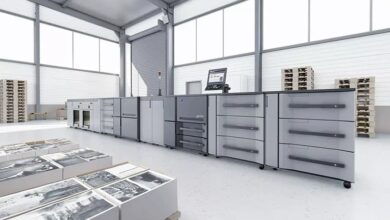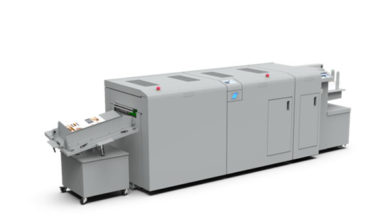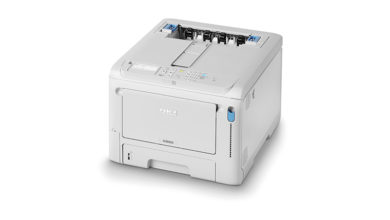The Newest Model Of Goss Magnum Compact Is Launched
In response to demand for a more versatile and cost-effective option, the Magnum Compact press is the newest model to earn a proud place in the Goss newspaper portfolio. Featuring a low-height (2.2m), single-level design and automatic plate-changing as standard, it excels across a wider range of newspaper, book and semi-commercial products and at ultra-short as well as conventional run lengths.
“We took the automation and process efficiency of the high-volume presses – such as our triple- and double-width Uniliner and Colorliner CPS models – and applied them to the more flexible single-width (2×1) platform, but with a sharp focus on retaining the reliability and ease-of-use advantages that are hallmarks of the Community/Magnum platform,” explains Leonardo Clavijo, Latin America Sales Manager, Goss International.
Built on features of the Goss Community/Magnum platform, the addition of automatic plate-changing and additional automatic functionality make it the most highly automated single-wide press on the market.
According to Clavijo, while standard Goss Community and Magnum presses still deliver exceptional performance and value for traditional single-width newspaper applications, this new press development provides an unprecedented ability to maintain high levels of utilization.
“Autoplate is the vital advantage of the Magnum Compact press, providing the ability to change the plates in 30 seconds and to complete a full job changeover in less than five minutes,” explains Clavijo. “Previously, the common logic was that fully automatic plate-changing could only be justified in a higher-volume double-width newspaper press. But this assessment is long out-of-date and overlooks the value of introducing efficiencies to any size of operation. Through decades of experience with Autoplate technology, we developed a simple, cost-effective system that brings the makeready and labour advantages to the single-width sector. This vital advantage becomes greater when more job changes are required.”
Another crucial detail is simplicity and low cost of operation. The short height (2.2m), single-level design of the Magnum Compact press provides manning benefits while maintenance is also simplified through the opening of the inker units to allow single-level access to blankets, rubber rollers and ink ducts.
Tackling the three leading factors that affect cost per copy – labour, consumables and press utilisation – the Magnum Compact press aims to improve the cost model substantially for shorter-run products. Goss has been promoting the press as effective for run lengths as low as 500 -1000 copies, which is in line with digital press run lengths. However, newspapers have so far proved slow to adopt such digital capabilities, begging the question, what makes Goss think this press is a better option for newspapers?
“Inkjet excels at variable data but, despite recent advances, still results in a higher cost per copy than can be justified in most market segments,” argues Clavijo. “The Magnum Compact lowers the break-even point to well under 1,000 copies by dramatically reducing makeready times so that it offers the essential elements to allow a printer to adapt to market trends and compete for short, medium and long-run work.
“Paper is also an important consideration, making it advantageous that the Magnum Compact press can print on standard, low-cost newsprint as well as higher-quality and coated substrates. Productivity is another differentiator. Running at speeds of up to 50,000 cph, 1000 copies of a typical newspaper signature can be completed in four minutes, including makeready. It frees up press time for more jobs on press, driving up potential revenue.”
Asked about the target market for the new press, Clavijo suggests its appeal is linked more to production requirements and opportunities than to geography, although there are obvious advantages for regions that employ distributed print sites such as is widely the case across Latin America.
“Standard single-width Magnum and Community presses have always been an excellent solution for handling production requirements for regional distribution of larger, national titles,” he explains. “In this scenario, the Magnum Compact now provides the technology to ensure the press can remain busy in between print runs of the principal titles, using the same or reduced crew.”
“Fast makereadies make it as suited to contract newspaper printers producing multiple titles as to a multi-product, multi-format operation running newspapers, books and semi-commercial products, for example. And going forward, it contains the essential elements to allow the printer to adapt to market trends and compete across a wider range of short-, medium- and long-run work.”

.gif)



